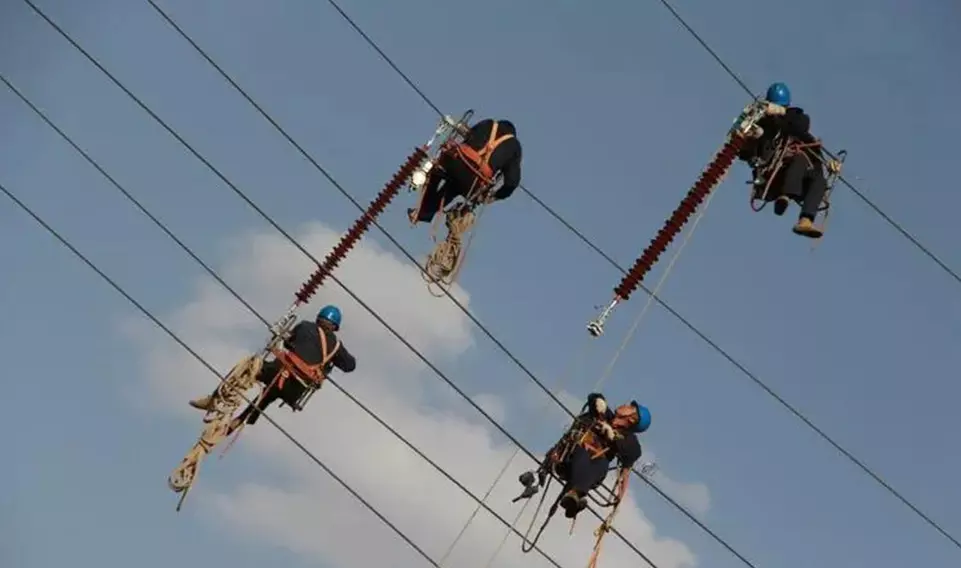
Guide to the use of safety ropes for aerial work
The guide to the use of safety ropes for aerial work is an important measure to ensure the safety of aerial workers. The following is a detailed guide from selection, installation, use to maintenance:
1. Select safety ropesType selection:According to different usage scenarios and functions, safety ropes for aerial work can be divided into full-body safety ropes, half-body safety ropes, positioning belts and other types.
Common safety rope materials include fiber core steel wire ropes, braided ropes, etc., and their diameters are generally between 15-20mm, which is sufficient to meet the safety needs of most aerial operations.
Quality requirements:The safety rope should comply with the national standard GB24543 or other relevant standards to ensure that it meets the requirements in terms of quality, strength, anti-aging performance, etc.
Check the diameter, material, processing quality, etc. of the safety rope to ensure that it has no problems such as uneven diameter, uneven twist, uneven strength, kinks, etc.
Accessory inspection:Check whether the hooks, buckles and other accessories of the safety rope are intact and can work normally.
2. Install the safety ropeFix point selection:Fix one end of the safety rope to a firm support point, such as a steel frame, beam, etc. Ensure that the fixed point can withstand the tension of the safety rope.
Fixing method:Both ends of the wire rope should be fixed on a firm and reliable frame, and the wire rope should be wound on the frame for no less than 2 turns. Pads should be added when in contact with the corners of the frame.
A rope clamp (also called a wire rope clamp) should be used to fix the ends of the wire rope. The rope clamp pressure plate should be at one end of the long end of the wire rope. The number of rope clamps should be no less than 3, and the spacing between rope clamps should not be less than 6 times the diameter of the wire rope. The safety clamp is installed about 500 mm away from the last clamp. The rope head should be released for a safety bend before being clamped with the main rope.
Height and support point:The fixed height of the wire rope should be 1.1 to 1.4 m; a fixed support point should be set every 2 m; the arc sag after the wire rope is fixed should be 10 to 30 mm.
3. Use of safety ropeWearing method:Put the other end of the safety rope through the buckle on the safety belt to ensure that the buckle is tight and not easy to fall off.
Adjust the tightness of the safety rope so that it is neither too tight to affect comfort nor too loose to cause safety hazards.
Precautions during operation:During high-altitude operations, operators should always keep the safety rope in a tight state to avoid shaking or swinging.
Avoid contact between the safety rope and sharp objects or heat sources to prevent wear or melting.
Always pay attention to the status of the safety rope. If any abnormality is found, the operation should be stopped and checked in time.
4. Maintain the safety ropeRegular inspection:Regularly check the degree of wear and breakage of the safety rope, and replace it in time if any abnormality is found.
Check whether the fixed end or fixed point is loose, and whether the wire rope is damaged, corroded, or broken.
Proper storage:After the high-altitude operation, the safety rope should be properly stored to avoid direct sunlight and humid environment.
Replacement standard:For severely worn or damaged safety ropes, they should be replaced in time and avoid use.
5. Other precautionsTraining and education: Strengthen safety education and training to improve the safety awareness and operating skills of operators.
Comply with the regulations: Strictly abide by the relevant regulations and operating procedures to ensure the stable and reliable performance of the safety rope.
In summary, the use guide of the safety rope for aerial work covers all aspects from selection, installation, use to maintenance. Only by strictly following these guidelines can the safety and smooth progress of aerial work be ensured.












